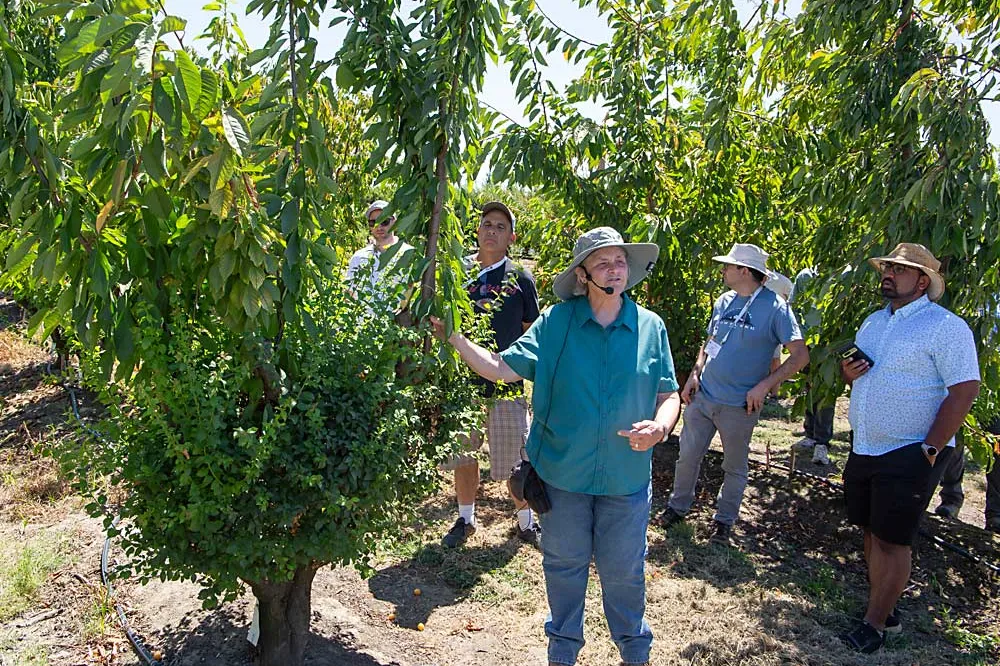The study, published in the journal 'Biological Conservation', anticipates that the climate crisis will force a progressive displacement of the wild cherry tree to higher altitude geographical areas, The results offer a practical application, as they will help to guide future cherry tree plantations as a source of resources for the brown bear, taking into account the possible impacts expected due to climate change. The work is the result of collaboration between the University of Oviedo, the Instituto Mixto de Investigación en Biodiversidad, the University of Granada and the Brown Bear Foundation.
The wild cherry tree is a species of great ecological importance in the Cantabrian Mountains, providing food and shelter for various species, from small fruit-eating birds to large mammals such as the brown bear.
Researchers from the University of Oviedo, the Joint Institute for Biodiversity Research (University of Oviedo, CSIC, Principality of Asturias), the University of Granada and the Brown Bear Foundation have now assessed the impact of climate change on the distribution of the wild cherry tree, an important food resource for brown bears in the Cantabrian Mountains. The work has just been published in the journal Biological Conservation, the most important journal in its field.
The study anticipates that climate change will force the cherry tree to move to higher altitudes. The researchers point out that, in the short term, in a time frame of between 20 and 40 years, the models predict a slight decrease in the potential area for the cherry tree in the Cantabrian Mountains and surrounding areas, while on a longer time scale, between 60 and 80 years, the decrease in the potential area is more pronounced.
This shows how climate change can affect the distribution of the cherry tree, improving or worsening its seasonal conditions in the study area and in the distribution area of the Cantabrian brown bear. The researchers indicate that the results obtained have a practical application since, for example, they will allow future cherry tree plantations to be oriented as a source of resources for the brown bear, taking into account the possible impacts expected from climate change.
José Vicente López-Bao, researcher at the Joint Institute for Biodiversity Research (University of Oviedo, CSIC, Principality of Asturias), explains that the wild cherry tree is a species of great ecological importance in the Cantabrian Mountains, providing food and shelter for various species.
"The relevance of the cherry for the brown bear lies in the fact that it is the first fleshy fruit to ripen at the beginning of the summer season, at the start of the hyperphagia period, when the availability of other fruits is limited, and its relevance as a resource for the bear seems to have increased in recent times".
"Cherry is a species highly sensitive to water deficit and, consequently, to climate change, so its distribution may be affected in the long term," adds Pedro Álvarez-Álvarez, researcher at the Department of Biology of Organisms and Systems (University of Oviedo).
Understanding the possible impact of climate change on the distribution of wild cherry trees and indirectly on brown bears and the interactions between cherry trees and bears, especially the dispersal of seeds to more suitable areas for cherry trees under future climate change scenarios, can contribute to establishing conservation actions that favour both species in the Cantabrian Mountains.
To this end, the study has assessed the suitability of current and future habitat for wild cherry using species distribution models based on actual presence/absence data and environmental variables related to the ecological constraints of the species. The researchers also examined seed dispersal by brown bears by analysing cherry seeds in bear droppings in space and time.
Changes in cherry habitat
"Both in the medium (2040-2060) and long term (2080-2100), based on currently available climate projections, habitat suitability for wild cherry will decrease due to the effects of climate change, particularly in the long term. The most suitable areas for cherry are expected to shift to higher elevations," says José Carlos Pérez-Girón, researcher at the University of Granada.
However, regardless of projected climate change scenarios and possible changes in the future distribution of bears, "the results indicate that the availability of cherries for brown bears in the Cantabrian Mountains will remain high, even in critical areas for the species", he stresses.
At the same time, the researchers point out that cherry consumption by bears follows the altitudinal pattern of cherry ripening. Therefore, the associated seed dispersal could enhance the expansion of wild cherry to potentially more suitable habitats in the future, generally located at higher altitudes, thus facilitating the adaptation of cherry trees to the effects of climate change.
This study has been carried out within the framework of the Bears with Future project, funded by the European Union and coordinated by the Brown Bear Foundation.
Source: Pérez-Girón, J. C., Álvarez-Álvarez, P., Ballesteros, F., & López-Bao, J. V. (2024). Potential impacts of climate change on wild cherry distribution and associated consequences on brown bears. In Biological Conservation (Vol. 289, p. 110390). Elsevier BV. https://www.sciencedirect.com/science/article/pii/S0006320723004913?via%3Dihub.
Image: Universidad de Oviedo
Cherry Times - All rights reserved










